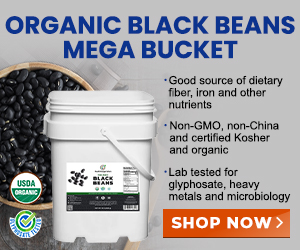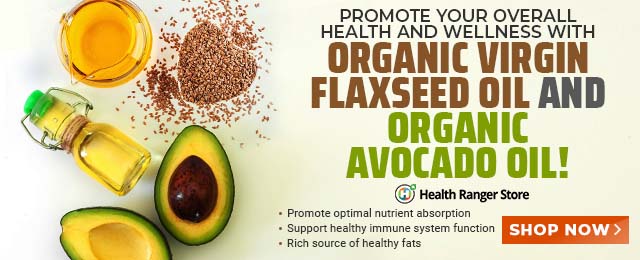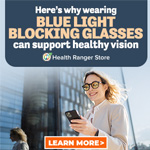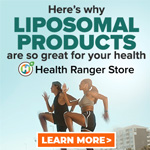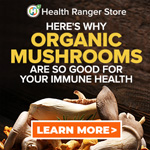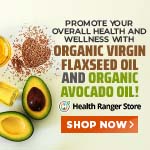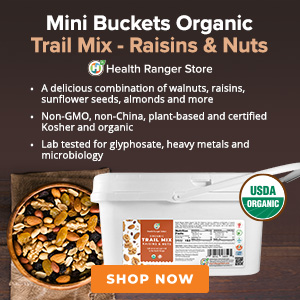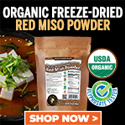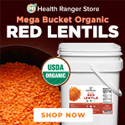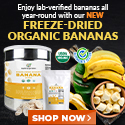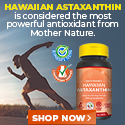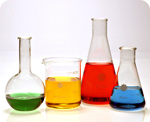
Hidden sources of food coloring chemicals in your diet
Sunday, October 09, 2011 by: PF Louis
Tags: food coloring, chemicals, health news
- Newly released JFK files reveal Pentagon's role in creating Lyme disease and covid in the same lab
- DEADLY DECEPTION: How COVID vaccines increased mortality rates and why authorities hid the truth
- CDC finally halts $11 billion COVID funding scam as health officials admit the ‘pandemic’ was a fraud
- The hidden dangers in your kitchen: How cooking methods impact diabetes, cancer and aging
- GAIN-OF-FUNCTION CAT-BIRD-FLU now on the rise as nearly a dozen cats in Colorado "test positive" for Bird Flu due to contaminated cat food
- Trump's greatest betrayal so far: Accelerating Middle East wars, silencing dissent, and serving Zionist masters
- Here are TEN all-natural ways to protect your garden without using harmful chemicals
- Why you should think twice before buying mainstream toothpaste formulas
- ATTENTION PRESIDENT TRUMP: Please WITHDRAW your nomination of Dr. Susan Monarez for CDC Director as she is a VAX FANATIC and TOXIC JAB ZEALOT
- Was JFK's assassination orchestrated by a CIA double agent? New evidence points to James Angleton as the “architect”
- Ginseng's hidden anti-aging power: How compound K is rewriting the rules of skincare
- Home gardening for preppers: A beginner's guide to growing your own food
- “Endgame: The Hidden Agenda 21” unveils a world of conspiracy and control
- Paper or plastic? The environmental deception behind bag bans
- Record honeybee deaths devastate U.S. agriculture, pesticides under scrutiny
- Senate Democrats deny censorship industrial complex existed, defend government's role in silencing dissent
- Lab leak confirmed? Boris Johnson's stunning reversal on COVID origins sparks global debate
- Speaker Johnson warns Congress may defund or disband rogue courts targeting Trump
- Newly released JFK files reveal Pentagon's role in creating Lyme disease and covid in the same lab
- Elon Musk: Aliens could be here on Earth RIGHT NOW
- Festive flavors: The sweet history, nutritional profile and health benefits of pecan pie
- Trump reverses course on Gaza plan, says “nobody is expelling Palestinians”
- Reclaim your health: How midlife exercise reverses years of inactivity
- Big Pharma's $8 Billion bribery scheme exposed: how doctors are pushed to prescribe junk science, not heal
- Boys are back in town: Trump’s patriotic alpha crew takes the wheel while toxic females ride in the backseat
- EPA advisor admits the agency is funneling billions to climate groups ahead of Trump’s return to White House
- Space war brewing? Russia threatens to destroy Starlink satellites
- Survival 101: Effective EMF blocking techniques
- A lack of integrity in Academia: Harvard professor found GUILTY of fraudulent research to promote CRT theory
- Mike Adams Sermon 66: God will DESTROY ISRAEL for its wickedness
- 5 Simple steps to boost your brainpower: How to strengthen executive function in a distracted world
- Rep. Nancy Mace introduces bill to ban biological males from female facilities on federal property
- Sugarcane extract superior to cholesterol-lowering drugs?
- WHO focusing more on policing speech about public health and implementing global surveillance systems
- Pilots report mysterious lights 'moving at extreme speeds' across Oregon skies
- Dr. Mike Yeadon releases 15-minute testimony - WATCH - about genocidal intent of COVID “vaccines”
- EPA advisor admits the agency is funneling billions to climate groups ahead of Trump’s return to White House
- The Health Ranger releases “Vaccine Zombie” song and music video, using AI-animated zombies for the music video
- California's social media censorship law struck down: A victory for free speech or a threat to online safety?
- Dr. Mike Yeadon releases 15-minute testimony - WATCH - about genocidal intent of COVID “vaccines”
- The pandemic as a tool for INDOCTRINATION: Understanding “The Indoctrinated Brain” by Dr. Michael Nehls
- Florida takes a stand: DeSantis proposes permanent ban on mRNA vaccine mandates
- Mike Adams releases country western hit single: Goin’ Back in Time is Comin’ Home
- Mike Adams releases music poetry sensation: A Child of God
- “Why we influenced the 2020 elections”: Facebook files reveal the coordinated effort to bury the Hunter Biden laptop story
- RFK Jr. clears key hurdle: Sen. Susan Collins backs controversial HHS nominee, signaling a new era for health policy
- Unpacking the Lies That We’ve Been Fed – new song and music video released by Mike Adams, the Health Ranger
- Mike Adams releases new song and music video: Nothing More Disgusting Than a Globalist
- Newly released JFK files reveal Pentagon's role in creating Lyme disease and covid in the same lab
- Congratulations to the FULLY UNVACCINATED as you resisted the COVID-19 PROPAGANDA MACHINE fueled by over $100 BILLION
- Michigan sheriff announces criminal investigation into 2020 election crimes, Dominion Voting Systems
- Israeli soldiers accused of even more torture and abuse in the West Bank
- Migrants are taking advantage of recent hurricanes to scam residents and loot their homes
- House Intelligence Committee calls for the ARREST and PROSECUTION of Dr. Anthony Fauci
- Red Cross issues warning to stop blood plasma donations from vaccinated people
- Scientists confirm: GENIUS brain function can be spontaneously unleashed in humans without any apparent cause
- EPA advisor admits the agency is funneling billions to climate groups ahead of Trump’s return to White House
- HYSSOP: What research reveals about the health benefits of this ancient holy herb
- Two containers with completed ballots fall out of truck in Florida
- Fully vaccinated about to see “tsunami” of illness and death, warns virologist
- Global leaders unite to clamp down on “misinformation” with UN-backed Cascais Declaration
- BREAKING: 2025 NDAA authorizes mandatory military draft of WOMEN across America… as Pentagon pursues global NUCLEAR war with both Russia and China at the same time
- Michael Yon warns of a ZIONIST TAKEOVER in Trump’s second administration
- BOMBSHELL: DNA testing kits are a SCAM to develop ethnic-specific bioweapons
- Ozempic and Wegovy weight loss drugs are injectable LIZARD VENOM PEPTIDES that may unleash a devastating wave of organ failure… side effects align with symptoms of SNAKE BITES
- Israeli soldiers accused of even more torture and abuse in the West Bank
- These 13 countries just signed an agreement to engineer a global FAMINE by destroying food supply
- NASA admits that climate change occurs because of changes in Earth’s solar orbit, and NOT because of SUVs and fossil fuels
- RFK Jr. clears key hurdle: Sen. Susan Collins backs controversial HHS nominee, signaling a new era for health policy
- Sermon 30: How Jesus reveals Caesar’s FAKE CURRENCY and FALSE AUTHORITY
- Coriander seeds: Ancient medicine backed by modern science
- Arizona officials claim Maricopa County needs 10-13 days to tabulate results of the election
Some food color additives, such as caramel and carmine, have less bad press. But there is enough bad press overall to force more color additive manufacturers into using natural plant extracts instead of synthetic chemicals.
Caramel and Carmine
Caramel, the grandfather of food coloring, is the most ubiquitous. It's what makes colas brown, like Pepsi, Coca-Cola and others. It's in almost any brown liquid including whiskey, brown gravies, many soy sauces, and most balsamic vinegars. It's also used in many junk food items from cookies to potato chips. It's created by caramelizing (burning) sugar.Any food burnt or charred can be carcinogenic due to acrylamide content. The FDA acknowledges the toxic potential of acrylamide in large doses, but considers caramel's acrylamide content insignificant.
Sometimes caramel is processed with ammonium. That's indicated by the codes Caramel E150C and E150D. The FDA concedes some side effects from E150C and E150D. California has listed all caramel coloring as carcinogenic.
Carmine or cochineal is a mash from crushed beetles stripped off cacti in lower Mexico and South America. Formerly used only to create red fabrics, it's now an FDA approved food color additive.
Some people can have extreme allergic reactions, including anaphylactic shock resulting in coma or death. So when you see carmine on your strawberry yogurt's list of ingredients, know that you're eating beetle juice yogurt.
Truly Natural Color Additives
Natural plant based extracts have begun to emerge as food color additives. Annatto, a yellow-orange extract from the seeds of a tropical shrub, is often used for cheese and butter. It can cause allergic reactions for some, usually hives.Anthocyanin is an extract from various red and purple plant sources. Beta carotene, chlorophyll, paprika, red beets, saffron, and turmeric are obvious plant sources.
Food color additive companies are filing patents for their extracts with those colors. Getting exclusive patent rights may involve a little chemical tweaking.
Petroleum Based Food Colors
FDA approved chemical food colors are indicated by FD&C (Food, Drugs, and Cosmetics) and are approved synthetic colors. As of 2007, the following seven were FDA approved for any food: Blue #1, Blue #2, Green #3, Red #3, Red #40, Yellow #5, and Yellow #6. Many are banned in Europe.The State of California, Dr. Weil, and others think they should be banned too. Currently, because of many complaints from parents and pediatricians, the FDA is investigating the effect of synthetic food colorings on adolescents and children.
But thus far, the FDA has rejected food coloring health danger claims, even overruling their own scientists who urged banning Red #3 in 1983.
Sources for more information include:
Mike Adams on food color additives https://www.naturalnews.com/022870_artificial...
All Natural News food color additive articles https://www.naturalnews.com/food_coloring.htm...
http://www.npr.org/2011/03/30/134962888/fda-...
http://www.cspinet.org/reports/chemcuisine.h...
http://www.additudemag.com/adhd/article/2991...
http://www.iatp.org/files/421_2_105204.pdf
FDA Panel to Consider Warnings for Artificial Food Colorings
http://www.nytimes.com/2011/03/30/health/pol...
Food coloring at FETCH.news
Get independent news alerts on natural cures, food lab tests, cannabis medicine, science, robotics, drones, privacy and more.
Take Action: Support Natural News by linking to this article from your website
Permalink to this article:
Embed article link: (copy HTML code below):
Reprinting this article:
Non-commercial use OK, cite NaturalNews.com with clickable link.
Follow Natural News on Facebook, Twitter, Google Plus, and Pinterest
Science News & Studies
Medicine News and Information
Food News & Studies
Health News & Studies
Herbs News & Information
Pollution News & Studies
Cancer News & Studies
Climate News & Studies
Survival News & Information
Gear News & Information
News covering technology, stocks, hackers, and more



"Big Tech and mainstream media are constantly trying to silence the independent voices that dare to bring you the truth about toxic food ingredients, dangerous medications and the failed, fraudulent science of the profit-driven medical establishment.
Email is one of the best ways to make sure you stay informed, without the censorship of the tech giants (Google, Apple, Facebook, Twitter, YouTube, etc.). Stay informed and you'll even likely learn information that may help save your own life."
–The Health Ranger, Mike Adams











